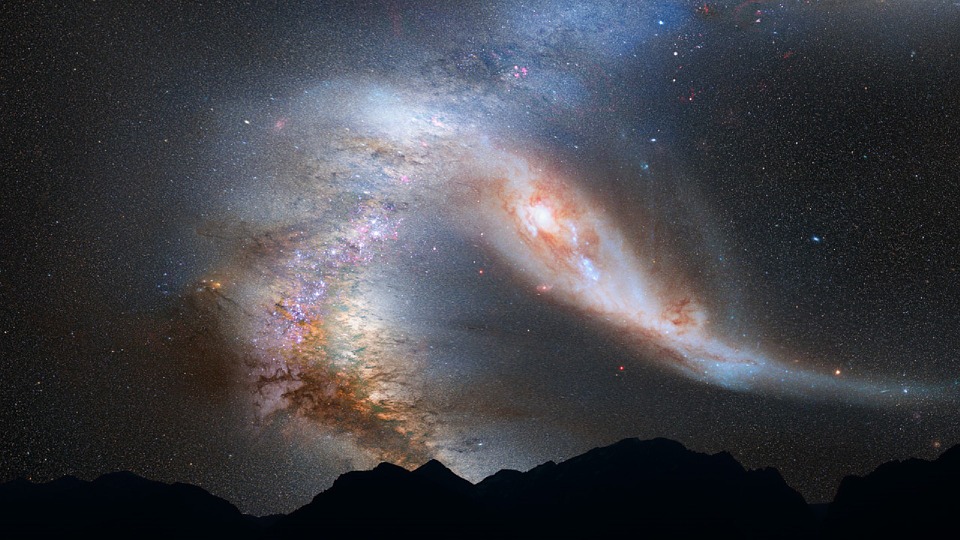Understanding the cosmos has always been a subject of curiosity not only to scientists but also to common mankind. From time immortals when science and technology was not even of present day level, people always wanted to know and understand the cosmos all around. The life system on earth (a planet of our solar system) has always intrigued and motivated scientists to look for life (aliens) on any other such space in our universe or cosmos outside our solar system. All of the planets in our solar system orbit around the Sun. Planets that orbit around other stars are called exoplanets.
The first possible evidence of an exoplanet was noted in 1917 which was not recognized as such. The first confirmation of detection occurred in 1992 which was followed bythe confirmation of a planet detected in 1988. Recognizing the importance of research in the field of understanding COSMOS and search for exoplanets, the Nobel Prize in Physics 2019 was awarded "for contributions to our understanding of the evolution of the universe and Earth's place in the cosmos" with one half to James Peebles "for theoretical discoveries in physical cosmology", the other half jointly to Michel Mayor and Didier Queloz "for the discovery of an exoplanet orbiting a solar-type star." A brief biography of these three Nobel laureates is as:
|
James Peebles, born 1935 in Winnipeg, Canada did Ph.D. (1962) from Princeton University (USA). At present is Albert Einstein Professor of Science at Princeton University. |
Michel Mayor, born 1942 in Lausanne, Switzerland. Did Ph.D.(1971) from University of Geneva, Switzerland and is Professor at University of Geneva, Switzerland.
|
Didier Queloz, born 1966 in Geneva, Switzerland. Did Ph.D. (1995) from University of Geneva, Switzerland. Professor at University of Geneva, Switzerland and University of Cambridge, UK. |
This year’s Laureates have transformed our ideas about the cosmos. While James Peebles’ theoretical discoveries contributed to our understanding of how the universe evolved after the Big Bang, Michel Mayor and Didier Queloz explored our cosmic neighbourhoods on the hunt for unknown planets. Their discoveries have forever changed our conceptions of the world. In October 1995, Michel Mayor and Didier Queloz announced the first discovery of a planet outside our solar system, an exoplanet, orbiting a solar-type star in our home galaxy, the Milky Way. At the Haute-Provence Observatory in southern France, using custom-made instruments, they were able to see planet 51 Pegasi b, a gaseous ball comparable with the solar system’s biggest gas giant, Jupiter. This discovery started a revolution in astronomy and over 4,000 exoplanets have since been found in the Milky Way. Strange new worlds are still being discovered, with an incredible wealth of sizes, forms and orbits. They challenge our preconceived ideas about planetary systems and are forcing scientists to revise their theories of the physical processes behind the origins of planets. With numerous projects planned to start searching for exoplanets, we may eventually find an answer to the eternal question of whether other life is out there.
Exoplanets are very hard to see directly with telescopes. They are hidden by the bright glare of the stars they orbit. So, astronomers use other ways to detect and study these distant planets. They search for exoplanets by looking at the effects these planets have on the stars they orbit. Different scientific methods used to search for exoplanets are summarized as:
Radial Velocity: Up until the launch of the planet hunting spacecraft Kepler in 2009, radial velocity was the most effective method for locating extrasolar planets. The vast majority of Exoplanets detected from Earth were discovered by this method.
Transit Photometry: This method detects distant planets by measuring the minute dimming of a star as an orbiting planet passes between it and the Earth. The passage of a planet between a star and the Earth is called a "transit." If such a dimming is detected at regular intervals and lasts a fixed length of time, then it is very probable that a planet is orbiting the star and passing in front of it once every orbital period.
Microlensing: Microlensing is the only known method capable of discovering planets at truly great distances from the Earth. Whereas radial velocity searches look for planets in our immediate galactic neighborhood, up to 100 light years from Earth, and transit photometry can potentially detect planets at a distance of hundreds of light-years, microlensing can find planets orbiting stars near the center of the galaxy, thousands of light-years away.
Astrometry: Astrometry is the science (and art!) of precision measurement of stars' locations in the sky. When planet hunters use astrometry, they look for a minute but regular wobble in a star's position. If such a periodic shift is detected, it is almost certain that the star is being orbited by a companion planet
Direct Imaging: Direct imaging of exoplanets is extremely difficult, and in most cases impossible. Being small and dim planets are easily lost in the brilliant glare of the giant stars they orbit. Nevertheless, even with existing telescope technology there are special circumstances in which a planet can be directly observed.
